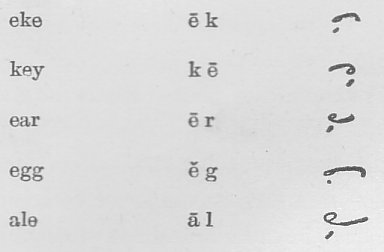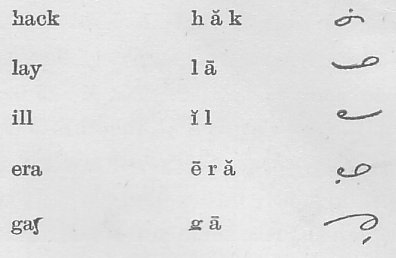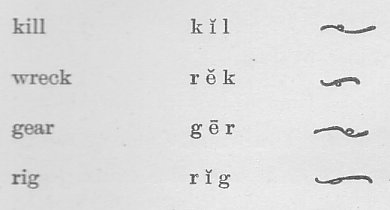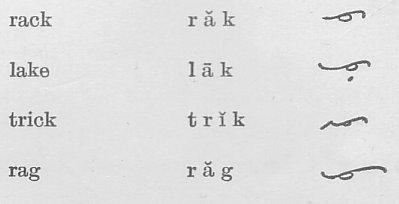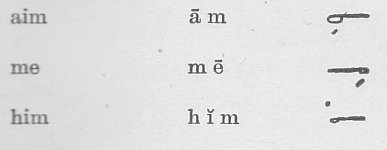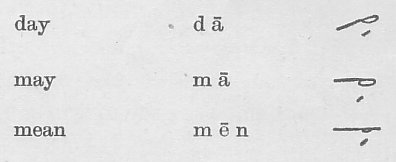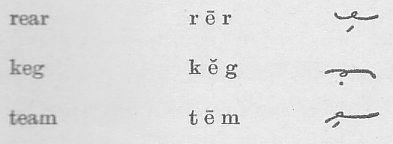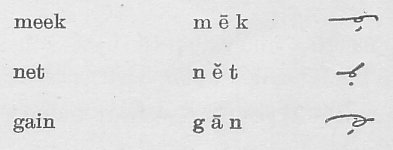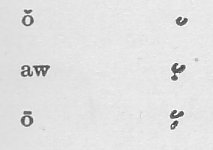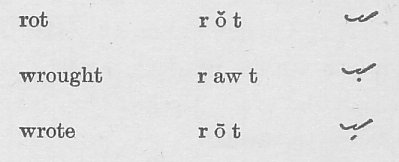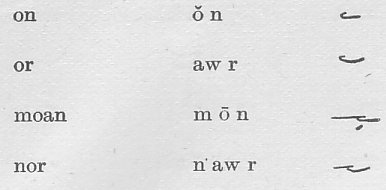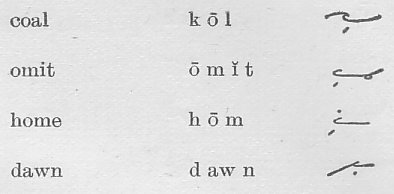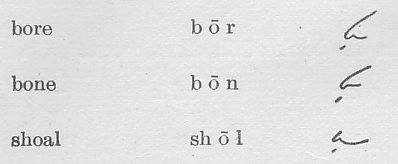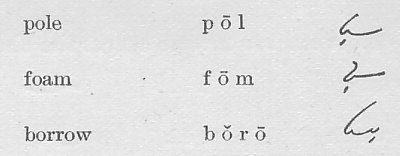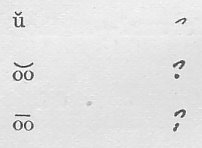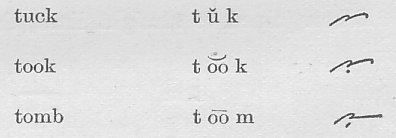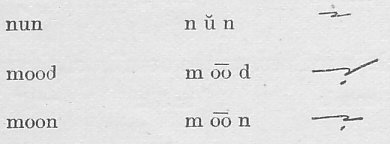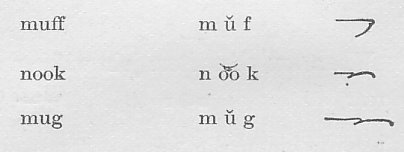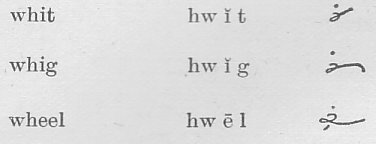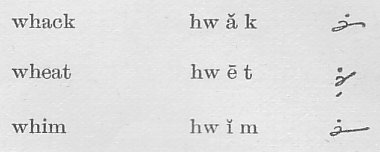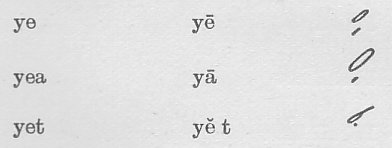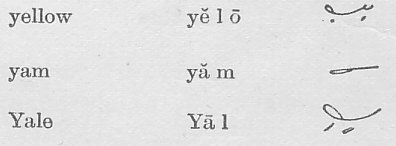|
When joined to a curve the circle is turned on the inside of the curve.
Between two reverse curves the circle is turned on the back of the first curve.
When joined to straight lines, the circle is written forward—as the hands of a clock move.
When two characters join with an angle, the circle is written on the outside of the angle.
The downward hook represents the short sound of o, heard in hot, top; a dot beneath the hook indicates the sound of aw, as in awe, law; while the short dash indicates the long sound, as in owe, no.
The downward hook is placed on its side before n, m, r, l, except when preceded by a downward character.
When preceded by a downward character, the hook retains its usual form.
The upward hook represents the short sound of u, heard in hum, dumb (not the long sound of u heard in use.); a dot beneath the hook indicates the sound of oo, in took, foot, while the short dash indicates the long oo, as in doom, boom.
To avoid an angle, the upward hook is dropped on its side after n or m.
The upward hook is also dropped on its side after k or g, when followed by r or l.
W is expressed by the sign for The combination wh is really sounded hw, as h-w-
The vowel e is equivalent to y, as
At the beginning of a word it is more convenient to express ye by a small loop, and ya by a large loop. Where necessary the dot or dash may be used to denote the exact vowel sound.
WORD-SIGNS AND PHRASES. |
